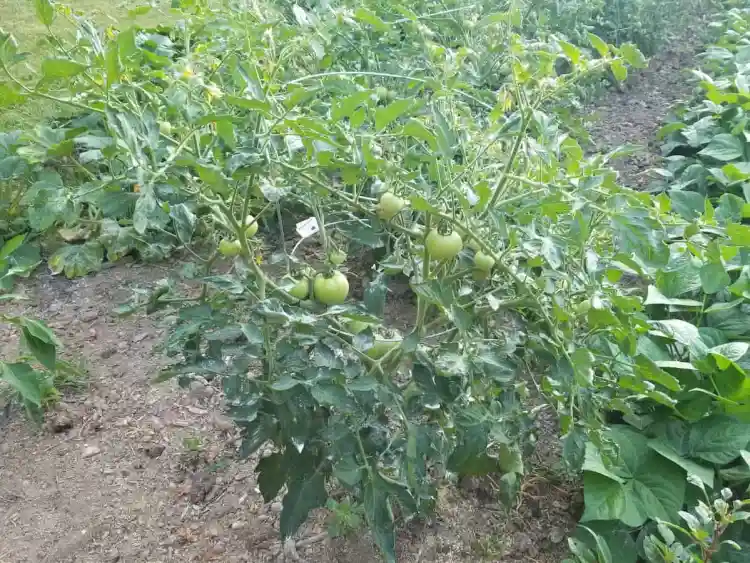Introduction to Succession Planting
Succession planting is a gardening technique where crops are planted at intervals to ensure a continuous harvest throughout the growing season. While traditionally associated with crops like lettuce and beans, succession planting can also be applied to tomatoes, offering several potential benefits. In this expert guide, we’ll explore the pros and cons of succession planting tomatoes, along with best practices and tips for success.
Understanding Succession Planting for Tomatoes
Succession planting tomatoes involves staggering the planting of tomato plants at regular intervals, typically every few weeks, to ensure a continuous supply of ripe fruit throughout the growing season. This technique can help extend the harvest period and prevent a glut of tomatoes all ripening at once, providing a steady supply for home gardeners and small-scale farmers.

Pros of Succession Planting Tomatoes
Extended Harvest Period
Succession planting allows for a longer harvest window, spreading out the ripening of tomatoes over several weeks or months. This ensures a steady supply of fresh tomatoes for culinary use or preservation.
Risk Management
Planting tomatoes at different times can help mitigate the risk of crop loss due to factors like disease, pests, or adverse weather conditions. If one crop fails, there are still subsequent plantings that may produce a successful harvest.
Cons of Succession Planting Tomatoes
Labor Intensive
Succession planting requires careful planning and regular maintenance, including preparing soil, planting seeds or seedlings, and ongoing watering, fertilizing, and pest control. This can be time-consuming and labor-intensive, especially for larger garden plots.
Space Limitations
Not all gardeners may have sufficient space to accommodate multiple plantings of tomatoes throughout the growing season. Succession planting may be more practical for those with ample garden space or access to raised beds or containers.
Best Practices for Succession Planting Tomatoes
Selecting Varieties
Choose tomato varieties suited to your climate and growing conditions, with varying maturity dates to stagger harvests effectively.
Timing Plantings
Plan successive plantings based on your local climate and frost dates, aiming for intervals of 2-4 weeks between plantings.
Soil Preparation
Ensure soil is well-drained, fertile, and amended with organic matter to support healthy tomato growth and fruit production.
Spacing and Support
Provide adequate spacing between tomato plants and install supports, such as cages or stakes, to prevent sprawling and support heavy fruit clusters.
Expert Recommendations and Resources
For more information on succession planting tomatoes and other gardening techniques, consult reputable sources such as:
United States Department of Agriculture (USDA): The USDA provides valuable resources and guides on gardening practices and crop management.
American Horticultural Society (AHS): The AHS offers expert advice and educational materials on gardening, including succession planting strategies.
Local Cooperative Extension Offices: Contact your local cooperative extension office for region-specific recommendations and gardening assistance from horticultural experts.
Conclusion
Succession planting tomatoes can be a rewarding strategy for home gardeners and small-scale farmers looking to extend their harvest season and maximize tomato yields. By carefully planning successive plantings and implementing best practices, gardeners can enjoy a steady supply of fresh, homegrown tomatoes throughout the growing season.
What is succession planting, and how does it apply to tomatoes? Succession planting involves planting crops at intervals to ensure a continuous harvest. For tomatoes, this means planting new crops every few weeks so that you have a staggered harvest throughout the growing season.
What are the benefits of succession planting tomatoes?
Succession planting tomatoes allows for a longer harvest period, helps manage risk by spreading out plantings, and prevents a glut of ripe tomatoes all at once.
When is the best time to start succession planting tomatoes?
The timing depends on your local climate and frost dates. Generally, you can start succession planting tomatoes as early as late spring and continue into summer for a prolonged harvest.
How much space do I need for succession planting tomatoes?
The amount of space required depends on the number of plants you want to grow and the variety you choose. Generally, tomatoes need about 2-3 feet of space between plants.
What tomato varieties are best suited for succession planting?
Look for tomato varieties with different maturity dates to ensure a continuous harvest. Choose varieties that are well-suited to your climate and growing conditions.
Can I succession plant tomatoes in containers or raised beds?
Yes, you can succession plant tomatoes in containers or raised beds as long as they have sufficient space, sunlight, and proper soil conditions.
How do I prepare the soil for successive plantings of tomatoes?
Amend the soil with organic matter like compost or aged manure to improve fertility and drainage. Ensure the soil is well-drained and has a slightly acidic pH for optimal tomato growth.
What is the ideal interval between successive plantings of tomatoes?
Aim for intervals of 2-4 weeks between successive plantings to ensure a continuous harvest without overwhelming yourself with too many ripe tomatoes at once.
How do I prevent disease and pest issues when succession planting tomatoes?
Practice good garden hygiene, including crop rotation, removing plant debris, and using disease-resistant tomato varieties. Monitor for pests regularly and use organic pest control methods when necessary.
Are there any special considerations for watering and fertilizing tomatoes with succession planting?
Provide consistent watering to newly planted tomatoes to help them establish roots. Fertilize tomatoes with a balanced fertilizer according to package instructions and adjust based on plant growth and soil test results.
- Explore THC Infused Drinks in New York - May 9, 2025
- The Latest in THC Seltzers Across Texas - May 9, 2025
- Top THC Infused Drinks Available in Oklahoma - May 9, 2025




